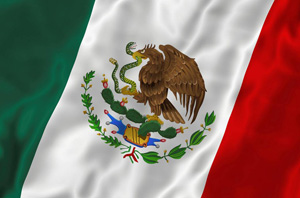
Automotive production in Mexico is on the rebound, but new-vehicle sales are stagnant due to an influx of used cars and trucks from the U.S.
“It’s clearly a problem,” Ricardo Haneine, a partner with consultancy A.T. Kearney, tells Ward’s. “Economic activity drives internal auto sales, so some of the sales in Mexico have been substituted by (used) imports.”
Through March, light-vehicle production in Mexico jumped 78.8%, compared with year-ago, to 539,417 units, according to Ward’s data. However, new-vehicle sales in the period slid 3.2%, compared with an historically poor 2009, to 188,522.
At the center of the dilemma is the North American Free Trade Agreement. Implemented Jan. 1, 1994, NAFTA was designed to eliminate barriers of trade and investment between the U.S., Canada and Mexico.
But the agreement allowed for the tariff-free importation of used cars from the U.S., flooding the Mexican market with cheaper alternatives to new cars. It’s estimated up to 1 million used U.S. cars entered Mexico annually from 2003 to 2008.
While some analysts say the used-car spigot will slow to a trickle when the Mexican economy rebounds from the ongoing recession, others argue the situation could worsen.
Guido Vildozo, a senior analyst with IHS Global Insight, says NAFTA guidelines will allow for later-model U.S. used cars to enter the Mexican market going forward.
“Due to NAFTA regulations, Mexico (passed) legislation in 2005 that any car 10 years or older could be imported,” he says, noting with every passing year the age limit decreases.
“Last year, it was nine years or older, and this year its eight years or older. The concern in the future is the role those cars are going to have against the new-car market as (Mexico) gradually is given more (newer-model) used cars.”

The problem is causing some industry players to call for government action.
Eduardo Solis, head of the powerful Mexican Automotive Industry Assn. is asking Mexican officials to “give the industry a tug.”
At a recent Reuters Latin American Investment Summit, Solis tells attendees local new-car demand could be boosted by stemming the flow of used cars into Mexico and freeing up financing, which has become difficult to obtain following the global economic crisis.
“We’re not talking about funding guarantees,” he is quoted as saying. “The crisis has made it difficult for consumers when some financial institutions are turning their back on segments that are now considered risky.”
Solis also calls for taxes to be cut on vehicle purchases, which would spur demand.
Vildozo agrees, saying lack of credit largely is to blame for stagnant car sales. “Through 2009, 70% of vehicles were financed,” he says. “In January (2010), only 50% of sales were on credit. We’re starting to climb out of the recession, but people still don’t feel completely comfortable going out and making a large purchase.”
However, Vildozo says a Mexican scrappage plan, similar to the U.S. “Cash for Clunkers” incentive program last summer, won’t help boost sales, citing the failure of an earlier initiative by the Mexican government.
“They announced a package last July, providing a government subsidy of about $1,000 (toward the purchase of a new vehicle),” he says. “Funds were available for about 35,000 cars, but they didn’t even make it to 10,000 units.”
But auto makers are calling on the government to step in. General Motors de Mexico S.A. de C.V. spokesman Mauricio Kuri says Mexican President Felipe Calderon has begun to tackle the used-car problem, but further action is needed.
“When Calderon (became president), he announced a new decree for conditions for (used) vehicles from the U.S.” Kuri says, noting there now are rules in place ensuring imported used vehicles pass emissions and safety regulations.
Despite the decree, which somewhat has slowed imports, the damage already is done, Kuri adds. “At this moment, we should take several years to recover to normal conditions.”
The Mexican light-vehicle market bottomed out last year, when only 774,240 new vehicles were sold, according to Ward’s data. That’s a drastic drop from recent years, when the 1 million-unit mark regularly was surpassed.
Sales are expected to hit 1.1 million units in 2012 and gradually rise to more than 1.3 million in 2015, J.D. Power and Associates says.
Not everyone believes the impact of used cars flooding into the country is a bad thing.
“New-car retailers in Mexico don’t want to see high-quality used cars in Mexico, and there are environmental groups that don’t want old cars,” says Lucas W. Davis, an assistant professor at the Haas School of Business at the University of California, Berkeley.
“But (NAFTA) rules are that Mexican dealers can bring cars down. There’s a giant unmet demand for cheap cars in Mexico, so I think it’s a great thing. A lot of Mexicans can have cars now.”
A.T. Kearney consultant Haneine agrees somewhat with Davis’ opinion, noting the Mexican government signed NAFTA and now must abide by its rules.
“You can’t try to close the market because we opened it,” he says. “It’s not a zero-sum game. The economy in general gains more than different parties lose. (Used cars) is a market that’s here to stay, and for the consumers it’s a positive.”



